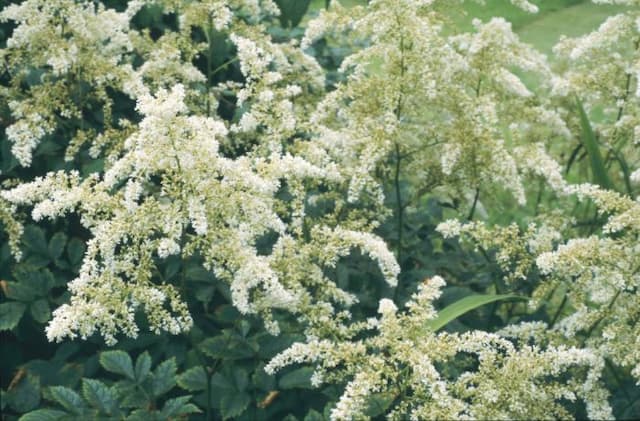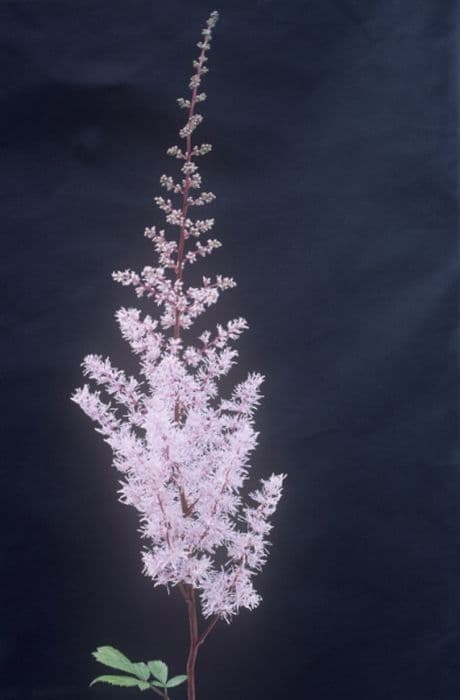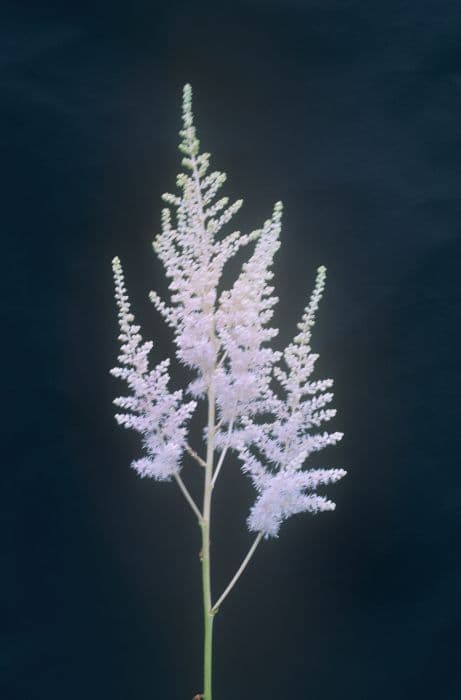Pigsqueak Bergenia cordifolia

ABOUT
The common name of Bergenia cordifolia is Heartleaf Bergenia, reflecting its characteristic heart-shaped leaves. The leaves are thick, leathery, and generally dark green, sometimes with a reddish tinge, especially during the colder months. They form a rosette at the base of the plant, from which flowering stems arise. The blooms appear in impressive clusters at the top of these stems and typically have a vivid pink hue, though they can vary from white to dark pink. The flowers are small and bell-shaped, arranged in a dense, pyramidal cluster, creating a showy display in bloom. After flowering, the plant produces small, reddish-brown fruit. The overall appearance of Heartleaf Bergenia is robust and lush, with its glossy foliage providing visual interest throughout the year.
About this plant
 Names
NamesSynonyms
Heartleaf Bergenia, Pigsqueak, Elephant's Ears, Leather Bergenia, Heart-leaved Bergenia, Winter Blooming Bergenia, Siberian Tea.
Common names
Bergenia crassifolia, Saxifraga cordifolia, Megasea cordifolia, Megasea crassifolia, Bergenia cordata.
 Toxicity
ToxicityTo humans
The plant commonly known as Heartleaf Bergenia is generally not considered highly toxic to humans. However, if ingested in large quantities, it could potentially cause mild stomach upset, nausea or vomiting. It's recommended to avoid consuming any part of this plant due to the possibility of these unpleasant symptoms.
To pets
Heartleaf Bergenia is not traditionally listed as a toxic plant for pets such as dogs and cats. Nonetheless, consumption of non-food plants can sometimes cause gastrointestinal disturbances in animals, such as vomiting or diarrhea. It's advisable to keep an eye on your pet and consult with a veterinarian if your pet has consumed a large amount of this plant or is showing signs of illness.
 Characteristics
CharacteristicsLife cycle
Perennials
Foliage type
Evergreen
Color of leaves
Green
Flower color
Pink
Height
1-2 feet (30-60 cm)
Spread
1-1.5 feet (30-45 cm)
Plant type
Herb
Hardiness zones
3
Native area
Asia
Benefits
 General Benefits
General Benefits- Ornamental Value: Bergenia cordifolia, commonly known as Pig Squeak, is valued for its attractive, glossy green leaves and showy pink flowers which enhance garden aesthetics.
- Low Maintenance: Pig Squeak is known for being relatively easy to care for, requiring minimal maintenance once established in the landscape.
- Tolerance to Shade: This plant thrives in partially shaded conditions, making it suitable for gardens with limited direct sunlight.
- Seasonal Interest: With its evergreen foliage in warmer climates and spring blooming flowers, Pig Squeak contributes to year-round garden interest.
- Drought Resistance: Once established, Bergenia cordifolia exhibits a degree of drought tolerance, making it suitable for water-conservative gardens.
- Ground Cover: Due to its clumping growth habit, it can serve as an effective ground cover, helping to reduce weed growth and soil erosion.
 Medical Properties
Medical Properties- Anti-inflammatory: Bergenia cordifolia has been traditionally used to reduce inflammation.
- Antimicrobial: Contains compounds that may help fight against bacteria and viruses.
- Antilithiatic: May be helpful in preventing the formation of kidney stones.
- Astringent: Can be used for tightening tissues and reducing bleeding.
- Diuretic: May promote the production of urine, aiding in the removal of excess water from the body.
- Antioxidant: Contains substances that might protect cells from damage caused by free radicals.
- Hepatoprotective: Might offer some protection to the liver from toxic substances.
- Immunomodulatory: May have effects on the immune system, potentially modulating its response.
 Air-purifying Qualities
Air-purifying QualitiesThis plant is not specifically known for air purifying qualities.
 Other Uses
Other Uses- Bergenia cordifolia, commonly known as 'Pigsqueak', can be used as a natural fabric dye, giving a range of colors from yellow to rusty brown depending on the mordant used.
- The large, leathery leaves of Pigsqueak can be used in crafting to imprint patterns on clay or paper due to their veined texture.
- Gardeners often use the evergreen foliage of Pigsqueak as an ornamental winter interest in colder climates, as leaves change to reddish or purplish in cold weather.
- The thick leaves of Pigsqueak can serve as a protective mulch for other plants during the winter months, helping to insulate them from the cold.
- When creatively placed, Pigsqueak can be used to regulate soil moisture and prevent erosion in sloped gardens due to its clumping growth habit.
- The nectar-rich flowers attract pollinators like bees and butterflies, making Pigsqueak a plant that supports local ecosystems.
- In landscape design, Pigsqueak is used for border edging because of its neat, clump-forming habit and attractive, broad leaves.
- This plant can be used as a ground cover in shady garden areas where other plants may struggle to thrive.
- Pigsqueak's ability to grow in a variety of soil conditions makes it a good choice for urban plantings, where soil quality can be poor.
- The plant can be used in floral arrangements, particularly the sturdy flower stalks that add height and interest to bouquets.
Interesting Facts
 Feng Shui
Feng ShuiThe Bergenia is not used in Feng Shui practice.
 Zodiac Sign Compitability
Zodiac Sign CompitabilityThe Bergenia is not used in astrology practice.
 Plant Symbolism
Plant Symbolism- Tenacity: Also known as "pig squeak," Bergenia cordifolia has leathery leaves that can withstand significant wear and tear, symbolizing the ability to endure tough conditions and maintain resolve.
- Protection: The thick leaves offer a natural protection against pests and harsh weather, signifying safety and shelter.
- Adaptability: Bergenia cordifolia can thrive in a range of soils and partial shade, indicating the ability to adapt to various environments and situations.
- Everlasting love: With its robust nature and evergreen leaves, it represents enduring affection that persists through all seasons and challenges.
- Healing: Historically used for its medicinal properties, Bergenia cordifolia embodies healing and the restoration of health.
 Water
WaterElephant's Ears should be watered regularly to keep the soil consistently moist but not waterlogged. During the growing season, water approximately once a week with about 24 ounces of water, adjusting for rainfall, to thoroughly moisten the soil. In winter, reduce watering to every other week, ensuring that the soil doesn't dry out completely. Overwatering can lead to root rot, so it is important to check the soil moisture before watering.
 Light
LightElephant's Ears thrive in partial shade to full shade, avoiding direct afternoon sunlight. The best spot for this plant would be a location where it can receive filtered light or morning sun, providing protection from the harsh rays of the full sun. A north-facing or east-facing position would be ideal for these light conditions.
 Temperature
TemperatureElephant's Ears prefer moderate temperatures, ideally between 50°F and 75°F. These plants can tolerate a bit cooler temperatures down to 30°F but should be protected from frost. They might not survive in extreme heat over 90°F, so in very hot climates, they should be positioned in areas with adequate shade and ventilation.
 Pruning
PruningPrune Elephant's Ears by removing old or damaged leaves to promote healthy growth and to maintain a neat appearance. This should be done as needed throughout the growing season. The best time for major pruning is in the spring before new growth starts, which enables the plant to put its energy into producing new, healthy leaves.
 Cleaning
CleaningAs needed
 Soil
SoilBergenia cordifolia, commonly known as Heartleaf Bergenia or Pigsqueak, thrives in a soil mix with organic matter, such as compost or peat moss, to retain moisture while providing good drainage. The soil pH should be slightly acidic to neutral, ranging from 6.0 to 7.0 for optimal growth.
 Repotting
RepottingHeartleaf Bergenia typically does not require frequent repotting and can often be left undisturbed for several years. It should be repotted or divided every 3-5 years to rejuvenate the soil and to manage its size.
 Humidity & Misting
Humidity & MistingHeartleaf Bergenia prefers average to high humidity but is quite adaptable and can tolerate less humid conditions commonly found in home environments.
 Suitable locations
Suitable locationsIndoor
Place Heartleaf Bergenia in bright, indirect light indoors.
Outdoor
Plant Heartleaf Bergenia in partial shade outdoors.
Hardiness zone
3-8 USDA
 Life cycle
Life cycleBergenia cordifolia, commonly known as heartleaf bergenia or pigsqueak, begins its life cycle as a seed, which upon finding the right conditions of moisture and temperature, will germinate and sprout. The seedling emerges, developing into a rosette of large, heart-shaped, leathery leaves that persist through the seasons. The plant establishes a strong root system, and as a perennial, it enters a cycle of dormancy in the winter and active growth in the spring. During the spring, it sends up tall flower stalks bearing clusters of pink to white flowers that attract various pollinators. After pollination, these flowers will produce seeds that can disperse into the nearby environment, allowing the cycle to begin anew. Throughout its life, Bergenia cordifolia will also propagate vegetatively via clumping and slowly spreading rhizomes, leading to dense patches of the plant over time.
 Propogation
PropogationPropogation time
Spring to Summer
Propogation: The most popular method of propagation for Bergenia cordifolia, commonly known as Heartleaf Bergenia or Pig Squeak, is division. This is usually done in the early spring or fall. To propagate through division, gently dig up the clumps of the plant and carefully separate them into smaller sections, ensuring that each section has at least one shoot and a portion of the root system attached. These divisions can then be immediately replanted in a prepared area of the garden, spacing them about 12 inches (approximately 30 centimeters) apart to allow sufficient room for growth. After planting, water the divisions thoroughly to help establish them in their new locations. Division not only helps to propagate Heartleaf Bergenia but also rejuvenates older clumps that may have become woody or less vigorous.









